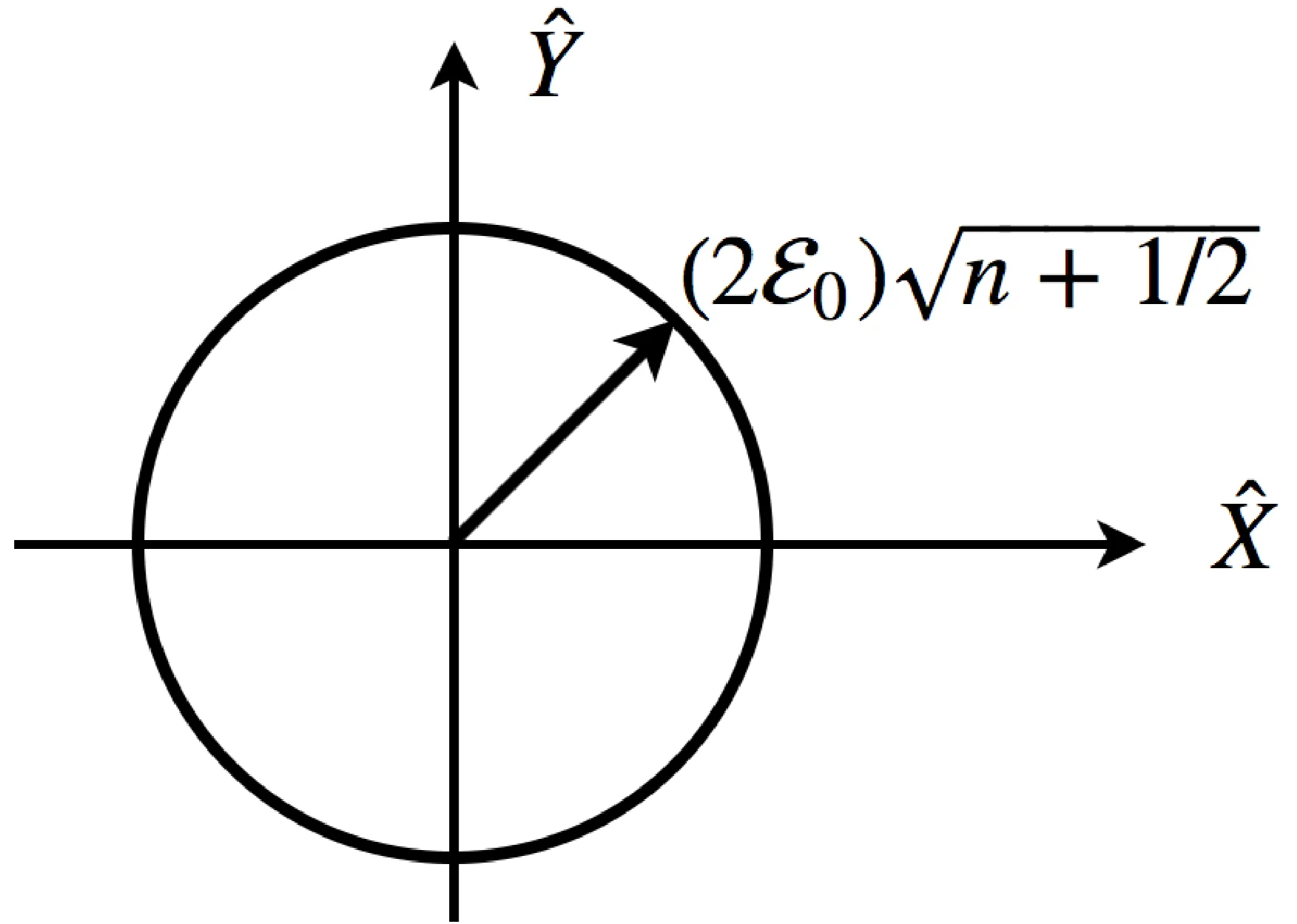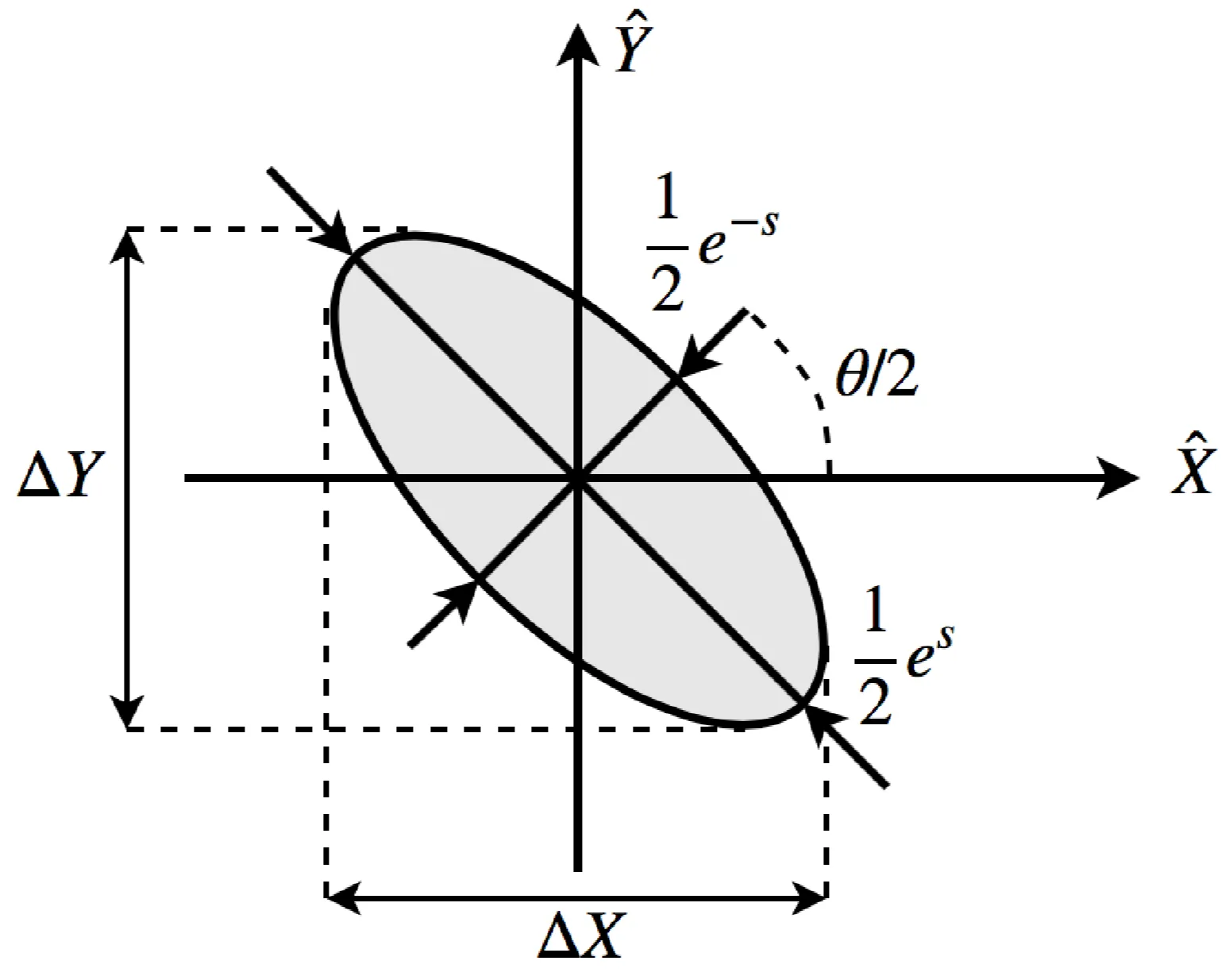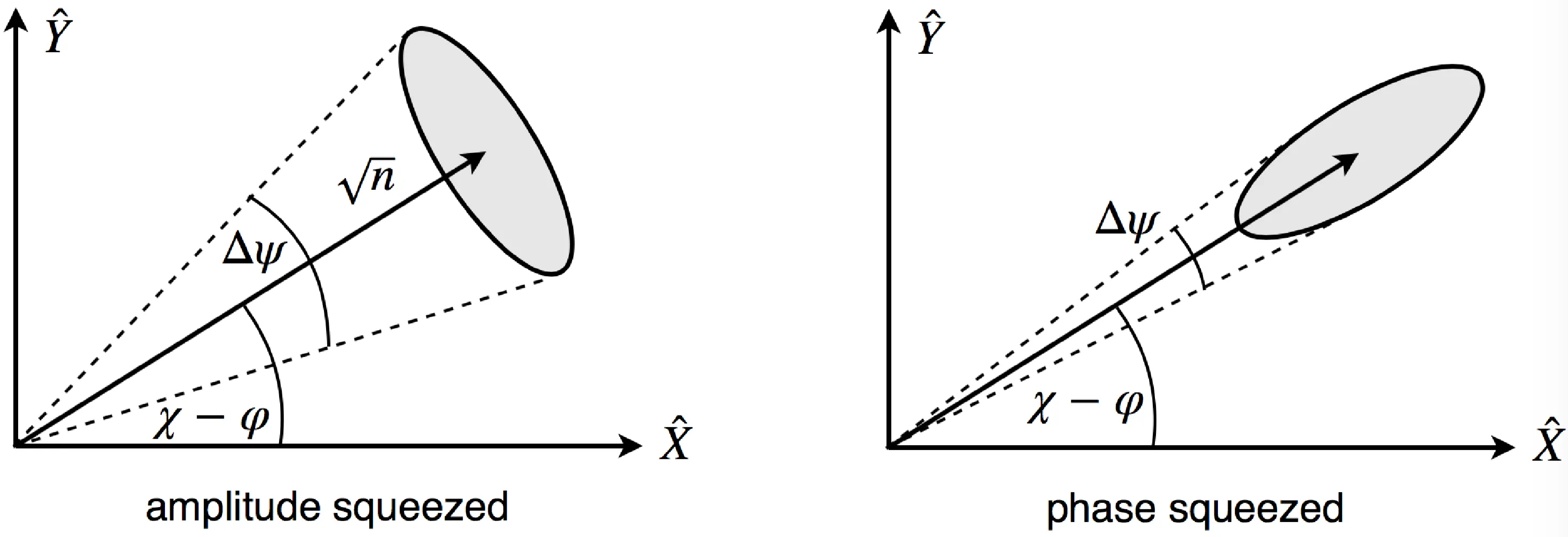Jump back to chapter selection.
Table of Contents
2.1 Single Mode Field Operators and Quadratures
2.2 Photon Number States
2.3 Coherent States
2.4 Squeezed Light
2 Quantum States of the Field
2.1 Single Mode Field Operators and Quadratures
We consider next a single-mode field, a single value of
Introducing yet another set of operators, the quadrature operators
we can rewrite the electric field as
It can then be shown that the commutation relation
holds. Remember this important relation between operators and commutator:
Applying this to the prior results yields the uncertainty in the field operator as
Note that in this expression, the field is measured in units of
2.2 Photon Number States
The photon number state is an eigenstate of the photon number operator
Intuitively, it is a state where we have "perfect" knowledge of the intensity, but no knowledge of the phase. The expectation values of both field quadratures vanish:
Remembering that
which is shown in the next figure (for normalised quadratures):
The product
As a result, only the vacuum (
2.3 Coherent States
The Hamiltonian that drives a field mode resonantly by a classical oscillation charge is
The time evolution of this Hamiltonian is as usual obtained by considering the corresponding time-evolution operator
Defining
which is called the displacement operator. Its effect on the ground state is producing the coherent state
Using the very useful Baker-Campbell-Hausdorff relation,
with
This is an exact result since we have that
Next, it is straightforward to give the form of the coherent state as a superposition of number states of the mode:
The introduction of the coherent state to optical fields is one of the starting points of quantum optics. They have a number of useful and important properties:
- Normalisation:
- They are an overcomplete set, e.g. they span the whole Hilbert space, but are not orthogonal
- They are eigenstates of the annihilation operator:
- They are left eigenstates of the creation operator
With these properties at hand, we may find a number of relevant statistical quantities. Assuming we have the ability to measure the photon number, we obtain for the mean
The number state distribution
This means that we should expect that the variance of the photon number is also defined only by
which is what we expect. The fractional uncertainty on the number of photons is then
In an alternative measurement, we may attempt to measure the electric field quadratures directly. We evaluate the expectation values of the field quadratures:
The variance then follows to be
We can see from this that the coherent state fulfils
This is the minimum uncertainty allowed by the Heisenberg relation. Additionally this statement is true for any value of
2.3.1 The Husimi-Q Function
As we have seen, the coherent state is a minimum uncertainty state which have their mean at a particular value of
where
2.3.2 Coherent States for Measurement
Classical fields are used in interferometry, for example in a Michelson-Morley interferometer using laser light, which is similar to a coherent state field. Usually, we aim to find the phase difference between two fields in an interferometric setup. The uncertainty of the measurement of the phase angle after the measurement of the quadrature is then of interest, since it limits the interferometer. We can evaluate the uncertainty of the phase of the field as
It defines the quantum limit for the measurement of the phase angle of a coherent state. From this value, we can derive an analogous result to the Heisenberg uncertainty relation for the phase and photon number:
An important scientific interferometer is the gravitational wave detector LIGO, which enabled the detection of gravitational waves in two MIchelson interferometer.
2.4 Squeezed Light
Heisenberg's uncertainty relation set a limit to the product of the uncertainties of the two quadratures of the field, namely
However, in principle nothing prevents the reduction of one quadrature at the expense of the other. Such a light is called quadrature squeezed if
Consider the squeezed state
This operator is defined as
where
The resulting state can be written in the Fock state basis as
where
To evaluate
by using
for
and that of the
The expectation values and their uncertainties are lying on an ellipse with axes of length
The electric field operator
is such that the expectation of the field in the state
This is not surprising, since it is a squeezed vacuum state. Similarly, the field variance is
This means that the fluctuations are 'modulated' as a function of the phase angle.
Schematically, it means that the fluctuations are "modulated" as a function of the phase angle. Such squeezed vacuum state can be measured by a homodyne experiment, while the squeezed state can be generated by a non-linear optics process.
2.4.1 Squeezed Coherent State
Mathematically, a squeezed coherent state can be obtained from a vacuum state by application of a squeeze and displace operator:
Application of this pair of operators lead to the following transformations on the operators
We now find that the expectation of the field is non-zero:
The uncertainties on
Therefore, the noise measured for a specific phase angle
while the expectation value is
The signal over noise is then
The maximum of the SNR is reached for
The average number of photons in that state is
and follows from the additive properties of the displacement and squeeze operator. For states with large relative photon numbers
while the uncertainty on the phase is
So we have that
as is expected for minimum uncertainty states. By playing with the value of



